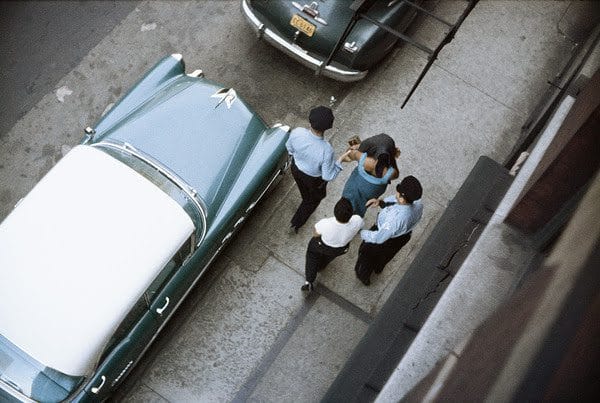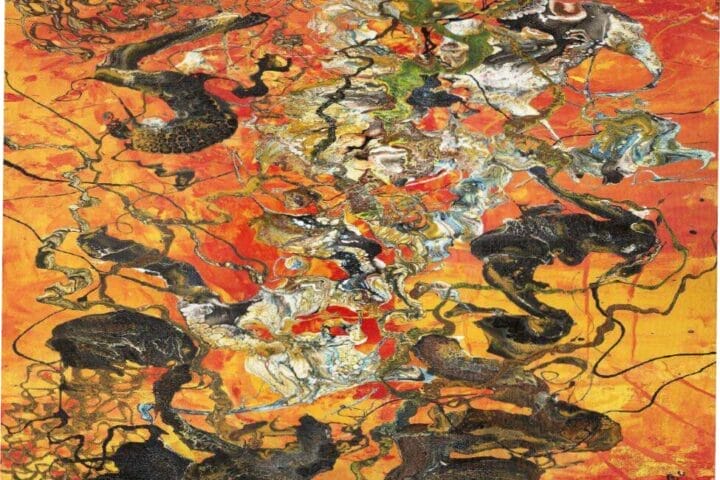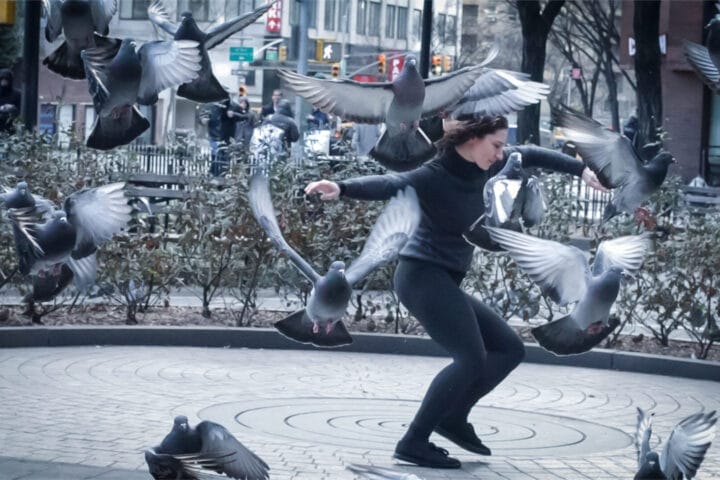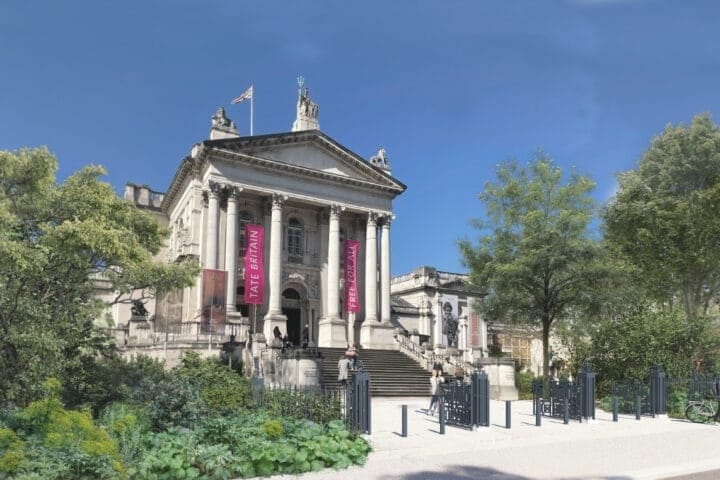NEW YORK CITY—Howard Greenberg Gallery will present the photography exhibition Gordon Parks: A Choice of Weapons from October 7 through December 23 in the new gallery on the 8th floor of the Fuller Building at 41 East 57th Street.
One of the world’s leading galleries for classic and modern photography, the Howard Greenberg Gallery is celebrating its 40th anniversary with an exhibition of important work by the renowned photographer and filmmaker Gordon Parks. Through his still images, both candid and staged, the exhibition explores the roots of Parks’ future as a filmmaker.
Parks, who described his camera as his “choice of weapons,” was known for his work documenting American life and culture with a focus on social justice, race relations, the civil rights movement, and the African American experience. He was hired as staff photographer for Life magazine in 1948, where over two decades he created some of his most groundbreaking work that cast light on the social and economic impact of poverty, discrimination, and racism.
In 1969, Parks launched a pioneering film career by becoming the first African American to write and direct a major studio feature, The Learning Tree, based on his semi-autobiographical novel—a career move foreshadowed through his cinematic approach to photography.
Marking the 50th anniversary of the release of Parks’ second feature-length directorial endeavor, Shaft (1971), a classic New York City detective film that spawned the blaxploitation genre, the gallery will present photographic works that reveal the artist’s cinematic approach.
Parks’ earliest photographs often imply a narrative beyond the individual frame, echoing his desire to represent complex facets of his subjects’ lives and communities. Like his films, Parks’ photographs present robust narratives that seek to reveal the complexities of his subjects’ lives.
The works on view include those staged in 1952 in collaboration with Ralph Ellison and inspired by his novel Invisible Man, as well as those made while Parks was embedded with the New York gang leader “Red” Jackson in 1948, and images of the Fontenelles, a Harlem family that struggled to feed their eight children in 1967.
The exhibition coincides with the release of the HBO documentary A Choice of Weapons: Inspired by Gordon Parks in November, and the extended presentation of works from his series The Atmosphere of Crime in the permanent collection galleries of the Museum of Modern Art, New York.
About Gordon Parks (1912-2006)
Gordon Parks was born into poverty and segregation on a farm in Kansas in 1912, the youngest of 15 children. He worked at odd jobs before buying a camera at a pawnshop in 1938 and training himself to become a photographer. From 1941 to 1945, Parks was a photographer for the Farm Security Administration and later at the Office of War Information in Washington, D.C. As a freelance photographer, his 1948 photo essay on the life of a Harlem gang leader, Red Jackson, won him widespread acclaim and a position as the first African American staff photographer and writer for Life magazine, which continued until 1972. In addition to being a noted composer and author, in 1969, Parks became the first African American to write and direct a Hollywood feature film, The Learning Tree, based on his bestselling novel of the same name. This was followed in 1971 by the hugely successful motion picture Shaft. Parks was the recipient of numerous awards, including the National Medal of Arts in 1988, and was given over 50 honorary doctorates from colleges across the United States. Photographs by Parks are in the collections of many major museums, including the Museum of Modern Art, J. Paul Getty Museum, National Gallery of Art, and the Metropolitan Museum of Art. Harvard Professor Henry Louis Gates, Jr. stated, “Gordon Parks is the most important Black photographer in the history of photojournalism. Long after the events that he photographed have been forgotten, his images will remain with us, testaments to the genius of his art, transcending time, place and subject matter.”
About The Gordon Parks Foundation
The Gordon Parks Foundation permanently preserves the work of Gordon Parks, makes it available to the public through exhibitions, books, and electronic media, and supports artistic and educational activities that advance what Gordon described as “the common search for a better life and a better world.” The Foundation is a division of the Meserve-Kunhardt Foundation.
About Howard Greenberg Gallery
Since its inception in New York 40 years ago, Howard Greenberg Gallery has built a vast and ever-changing collection of some of the most important photographs in the medium. The Gallery’s collection acts as a living history of photography, offering genres and styles from Pictorialism to Modernism, in addition to contemporary photography and images conceived for industry, advertising, and fashion.
Formerly a photographer and founder of The Center for Photography in Woodstock in 1977, Howard Greenberg has been one of a small group of gallerists, curators and historians responsible for the creation and development of the modern market for photography. Howard Greenberg Gallery—founded in 1981 and originally known as Photofind—was the first to consistently exhibit photojournalism and ‘street’ photography, now accepted as important components of photographic art.
The Gallery is located in two 57th Street locations: an exhibition space on the 8th floor of the Fuller Building at 41 East 57th Street; and an entire floor at 32 East 57th Street, directly across from the Fuller Building, to house, manage and present its vast archive of over 40,000 prints.
Gordon Parks Photographs at Howard Greenberg Gallery










